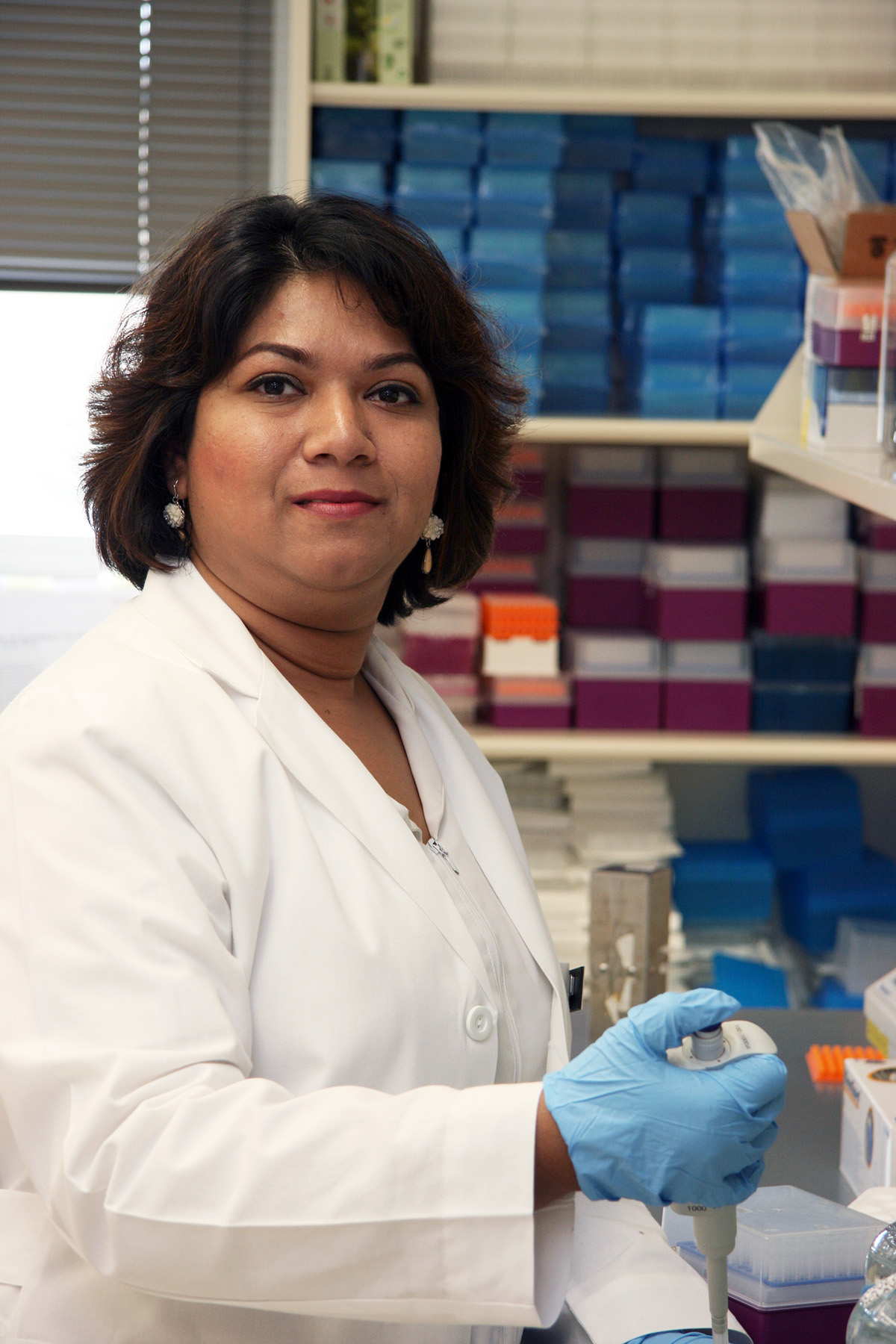Researcher looks for ways to combat diabetes


In the past couple of decades there has been a dramatic increase in the incidence of diabetes in the United States. Direct medical costs for diabetes exceeds $176 billion, making the average medical expenditures for those diagnosed diabetes 2.3 times higher than the expenditures of those without diabetes.
According to the American Diabetes Association (ADA), 25.8 million children and adults in the U.S.—8.3 percent of the population—have diabetes. Of that number, 18.8 million people are diagnosed and an estimated 7 million others remain undiagnosed.
Unfortunately, 2.5 million Texans have diabetes—which is projected to be near 8 million within the next 30 years.
The rate in South Texas is three times higher than the national average, according to the ADA. The health care cost in South Texas alone is $1.5 billion.
“This trend cannot be clarified entirely by dietary, social and behavioral changes that have occurred during the same time,” said Mahua Choudhury, PhD, assistant professor of pharmaceutical sciences at the Texas A&M Health Science Center Irma Lerma Rangel College of Pharmacy. “It is known that people who consume low calorie diet and exercise are also diagnosed with diabetes.”
Choudhury, an ADA fellow and expertise in epigenetics, suggests that epigenetic changes may precede the accumulation of genetic events in diabetes evolution. “Environmental risk factors are thought to be initiators or accelerators in developing diabetes,” she said.
Over the past three and a half decades, research has identified many of the genetic, immunological and environmental factors that are involved in the disease. However, despite a substantial gain in knowledge, these results have offered few opportunities for preventive actions against diabetes, regardless of type. While several genes have been linked to diabetes, the existence of these genes cannot explain the rapidly growing prevalence of this disease worldwide. It is necessary to look further into the changes caused by external factors in patients with diabetes or people who may develop diabetes.
“Environmental factors can cause epigenetic changes—which are not changes to a gene, but,rather, a modification to a gene,” Choudhury said.“If detected early enough, these modifications can be easily reversed through proper diet and nutrition. This proactive approach avoids long clinical trials and the resultant effort to develop new drugs to treat the disease.”
Choudhury’s unconventional idea potentially leads to the early prediction of onset diabetes and can help make a noticeable difference in preventive treatment protocols.
Choudhury has already teamed up with several pharmacy, masters and post-doctoral students, as well as with her pharmacy colleagues, Joan Everett-Houser, PharmD, assistant professor of pharmacy practice, John Bowman, associate professor of pharmacy practice, David Potter, PhD, professor and chair of pharmaceutical sciences, and several other international collaborators to fight this disease in a unique way.
“My research is being completed in hopes that it will create an environment where diabetes is no longer a threat,” she said. “In essence, it would protect the lives of children of this generation and all future generations.”
Media contact: media@tamu.edu


